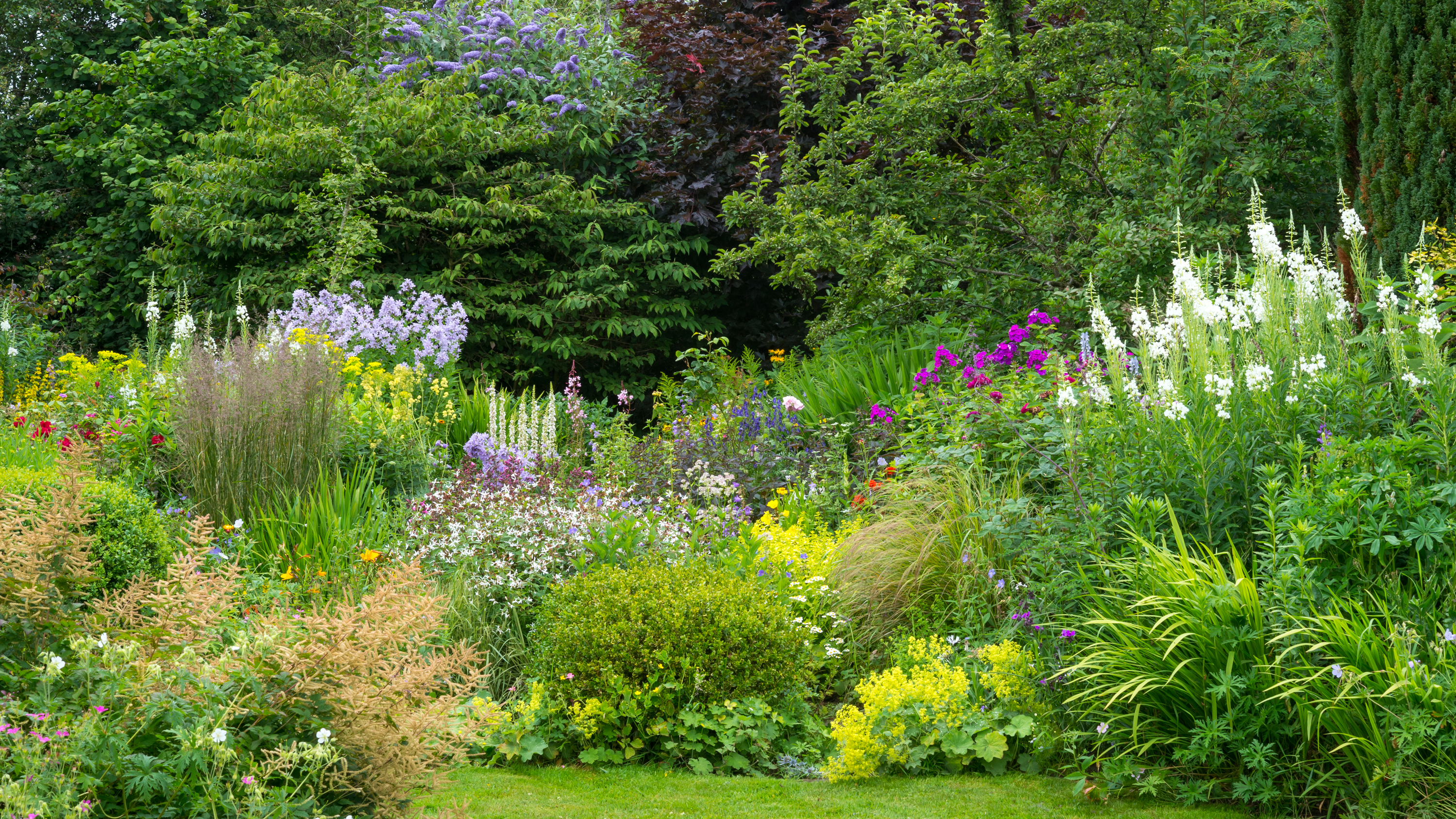Monty Don top 3 tips for supporting plants – and why you need to do it now
Supporting plants is crucial to beautiful borders; do it right with these top tips from gardening guru Monty Don


Monty Don's tips for supporting plants – particularly herbaceous plants which don't have woody stems – are just what you need to get the best results from all the flower bed ideas you have in mind this summer season. Timing is of the essence with supporting herbaceous plants – and this week is perfect for installing them.
Herbaceous plants include all annuals, most biennials, and some perennial plants herbaceous, with many prone to damage from strong winds, heavy rain, or even hail if you live in an area prone to it. Some herbaceous plants simply flop over without a support because the young plants aren't strong enough to support themselves.
For all of these reasons, now is the time to start thinking about plant supports, Monty writes in a recent blog post.
1. Plan your plant supports sooner rather than later

Mid-April is the perfect time to start supporting young plants as they begin actively growing. Monty writes that 'The purpose of plant supports is to prevent any damage rather than to repair it , so the correct time to support any plant is before it needs to be done.'
Don't worry about having unsightly canes everywhere – 'within a few weeks the supports will be hidden but quietly doing their work with the tender but vigorous new growth contained within their gentle, protective embrace,' says Monty, who stresses that getting supports 'into place now will avoid trying to rescue damaged plants in a month or two’s time.'
- See: Garden path ideas – create a beautiful walkway with the right materials, edging and plants
2. Choose the right plant support materials

Which plant supports are best – metal, wood, or bamboo ones? Monty uses 'a mixture of home-made metal supports, pea sticks (essentially bushy prunings from the garden) and canes with twine.'
Previously, Monty demonstrated making his own metal plant supports from steel rods – surprisingly easy to get from a steel stockholder. They're normally used in building to reinforce concrete – they are slim and easy to bend.
Design expertise in your inbox – from inspiring decorating ideas and beautiful celebrity homes to practical gardening advice and shopping round-ups.
Bamboo canes work best as more temporary supports – though 'they just never look that good', Monty confesses.
3. Make sure your plant supports are adjustable

Plant supports are sometimes misunderstood as ways to change the shape of a plant or the direction it's leaning/growing in. Monty advises against this and explains that the material or shape of your plant support is less important than its adjustability: 'Whatever you choose try and anticipate the growth and make the support adjustable or flexible to adapt a little.'
See: Patio planting ideas – add life to your outdoor space with plants
Steel wins again because it is more flexible and can be reshaped slightly as the plants grow bigger, but most plant supports can at least be pushed up a bit as the plants grow taller.

Anna is a professional writer and academic. She taught English Literature for several years before joining Future where she wrote for Real Homes, Homes & Gardens and Livingetc for four years. She is a regular contributor for Parade Home, BiggerPockets, and many other publications. In her spare time, Anna enjoys hiking and gardening.